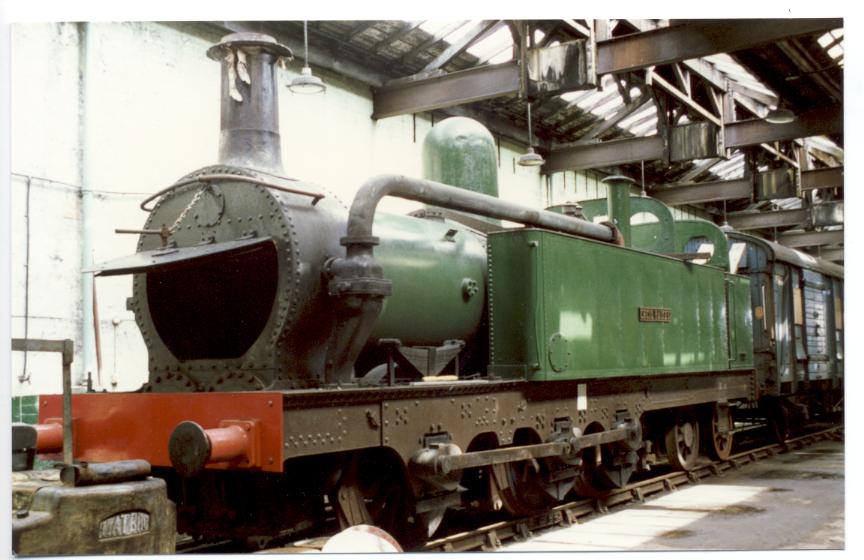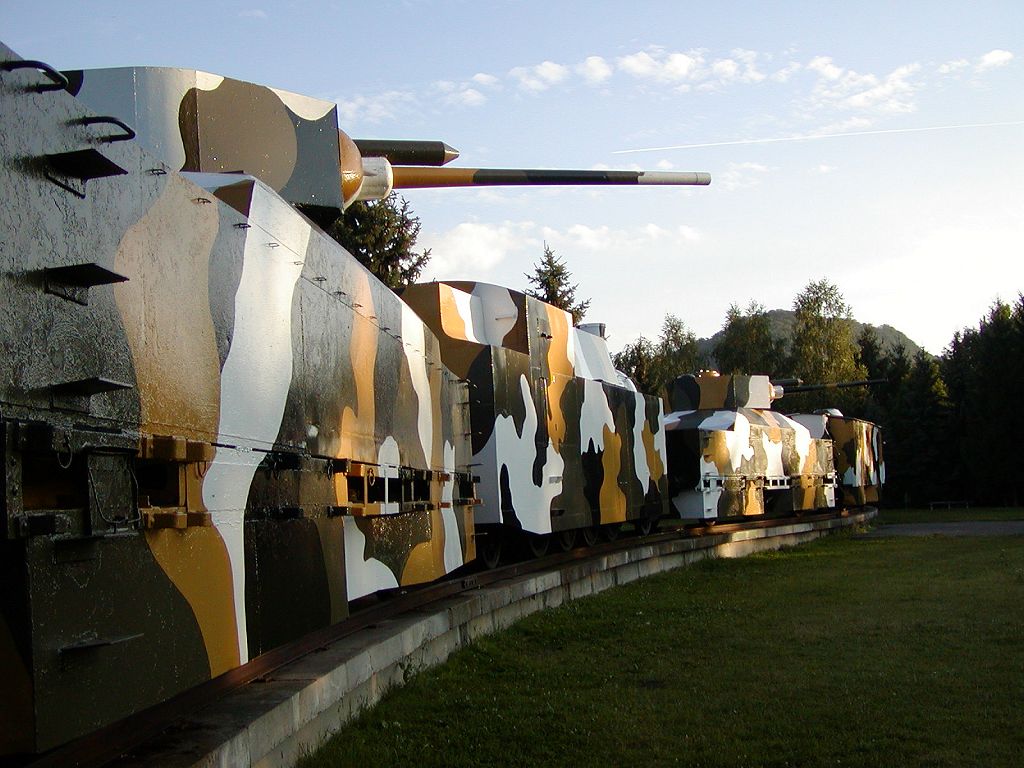|
GNR Class N1
The Great Northern Railway (Great Britain), Great Northern Railway (GNR) Class N1 was an 0-6-2T side tank steam locomotive designed by Henry Ivatt and introduced in 1906. They were all withdrawn from service between 1947 and 1959. None have survived. Most of the class were fitted with Condensing steam locomotive, condensing apparatus and worked in the London area, from King's Cross and Hornsey depots, on empty coach trains, and on cross-London exchange freight trains. In 1914, Crewe Works built an armoured train which used a Class N1 engine. The engine was covered by a 14mm steel plate, and featured observation apertures to the front and side, closed by sliding steel shutters. Two of the Ivatt tank engines No. 1587 and No. 1590 were loaned to Crewe to be fitted with armor plating and were named HMT Norna and HMT Alice respectively. They were sold back to the LNER in 1923 and had their armor plating removed. References * * *Ian Allan ABC of British Railways Locomotives, 19 ... [...More Info...] [...Related Items...] OR: [Wikipedia] [Google] [Baidu] |
Henry Ivatt
Henry Alfred Ivatt (16 September 1851, Wentworth, Cambridgeshire – 25 October 1923) was an English railway engineer, and was the Chief Mechanical Engineer of the Great Northern Railway from 1896 to 1911. Career London and North Western Railway Educated at Liverpool College., at age 17, Ivatt was apprenticed to John Ramsbottom at the Crewe Works of the London and North Western Railway (LNWR). He worked as a fireman for six months and held various positions there. He was made head of the Holyhead Locomotive Depot in 1874, before being promoted to the head of the Chester District. Great Southern and Western Railway In 1877, Ivatt moved to Ireland, and the Great Southern and Western Railway at Inchicore. In 1882, he was appointed to the post of locomotive engineer there, where he patented a design for a sprung flap for vertically-opening carriage windows that became ubiquitous. Great Northern Railway In 1895, Ivatt returned to England and was appointed Locomotive Sup ... [...More Info...] [...Related Items...] OR: [Wikipedia] [Google] [Baidu] |
Condensing Steam Locomotive
A condensing steam locomotive is a type of locomotive designed to recover exhaust steam, either in order to improve range between taking on boiler water, or to reduce emission of steam inside enclosed spaces. The apparatus takes the exhaust steam that would normally be used to produce a draft for the firebox, and routes it through a heat exchanger, into the boiler water tanks. Installations vary depending on the purpose, design and the type of locomotive to which it is fitted. It differs from the usual closed cycle condensing steam engine, in that the function of the condenser is primarily either to recover water, or to avoid excessive emissions to the atmosphere, rather than maintaining a vacuum to improve both efficiency and power. Thermodynamics Unlike the surface condenser often used on a steam turbine or marine steam engine, the condensing apparatus on a steam locomotive does not normally increase the power output, rather it may decrease considerably due to a reduction ... [...More Info...] [...Related Items...] OR: [Wikipedia] [Google] [Baidu] |
Scrapped Locomotives
Scrap consists of Recycling, recyclable materials, usually metals, left over from product manufacturing and consumption, such as parts of vehicles, building supplies, and surplus materials. Unlike waste, scrap can have Waste valorization, monetary value, especially recovered metals, and non-metallic materials are also recovered for recycling. Once collected, the materials are sorted into types – typically metal scrap will be crushed, shredded, and sorted using mechanical processes. Metal recycling, especially of structural steel, Ship breaking, ships, used manufactured goods, such as Vehicle recycling, vehicles and white goods, is an industrial activity with complex networks of wrecking yards, sorting facilities, and recycling plants. The industry includes both formal organizations and a wide range of informal roles such as waste pickers who help sorting through scrap. Processing Scrap metal originates both in business and residential environments. Typically a "scrapper" wi ... [...More Info...] [...Related Items...] OR: [Wikipedia] [Google] [Baidu] |
Condensing Steam Locomotives
Condensing may refer to: *Condensation *Condensing steam locomotive * Condensing boiler *Condensing osteitis Condensing osteitis, also known as focal sclerosing osteomyelitis, is a rare periapical inflammatory condition characterized by the formation of sclerotic bone near the roots of premolars and molars. This condition arises as a response to dental ... {{disambig ... [...More Info...] [...Related Items...] OR: [Wikipedia] [Google] [Baidu] |
Railway Locomotives Introduced In 1906
Rail transport (also known as train transport) is a means of transport using wheeled vehicles running in tracks, which usually consist of two parallel steel rails. Rail transport is one of the two primary means of land transport, next to road transport. It is used for about 8% of passenger and freight transport globally, thanks to its energy efficiency and potentially high speed.Rolling stock on rails generally encounters lower frictional resistance than rubber-tyred road vehicles, allowing rail cars to be coupled into longer trains. Power is usually provided by diesel or electric locomotives. While railway transport is capital-intensive and less flexible than road transport, it can carry heavy loads of passengers and cargo with greater energy efficiency and safety. Precursors of railways driven by human or animal power have existed since antiquity, but modern rail transport began with the invention of the steam locomotive in the United Kingdom at the beginning of the 19 ... [...More Info...] [...Related Items...] OR: [Wikipedia] [Google] [Baidu] |
Great Northern Railway (Great Britain) Locomotives
Great Northern Railway or Great Northern Railroad may refer to: Australia *Great Northern Railway (Queensland) in Australia * Great Northern Rail Services in Victoria, Australia *Central Australia Railway was known as the great Northern Railway in the 1890s in South Australia *Main North railway line, New South Wales (Australia) Canada * Great Northern Railway of Canada Ireland *Great Northern Railway (Ireland) New Zealand * Kingston Branch (New Zealand) in Southland *Main North Line, New Zealand and Waiau Branch in Canterbury United Kingdom *Great Northern Railway (Great Britain) **Thameslink and Great Northern, a former operator of trains on this route, now merged with Govia Thameslink Railway (GTR) **West Anglia Great Northern, a former operator of trains on this route **Great Northern route, a brand of GTR United States * Beaumont and Great Northern Railroad, predecessor of the Waco, Beaumont, Trinity and Sabine Railway, a defunct Texas shortline *Great Northern Railw ... [...More Info...] [...Related Items...] OR: [Wikipedia] [Google] [Baidu] |
Armoured Train
An armoured train (Commonwealth English) or armored train (American English) is a railway train protected with heavy metal plating and which often includes railway wagons armed with artillery, machine guns, and autocannons. Some have also had ports used to fire small arms from the inside of the train, especially in earlier armoured trains. For the most part, they were used during the late 19th and the early 20th centuries, when they offered an innovative way to quickly move large amounts of firepower into a new location. Most countries have discontinued their use since road vehicles became much more powerful and offered more flexibility, train tracks proved too vulnerable to sabotage and attacks from the air, and air transportation was an even more flexible way to relocate firepower to a new location. However, there have been occasional uses in the late 20th century and early 21st century. Russia has used improvised armoured trains during the Second Chechen War (1999–2009 ... [...More Info...] [...Related Items...] OR: [Wikipedia] [Google] [Baidu] |
Harringay With Ex-GN Ivatt 0-6-2T Geograph-2882454-by-Ben-Brooksbank
Harringay (pronounced ) is a district of north London, England, within the London Borough of Haringey. It is centred on the section of Green Lanes running between the New River, where it crosses Green Lanes by Finsbury Park, and Duckett's Common, near Turnpike Lane. Location The boundaries of Harringay form a rough boot shape in the extreme southern centre of the borough of Haringey. The western boundary of Harringay is formed by the East Coast Main Line. The northern boundary is to the south of Turnpike Lane, running parallel to it, somewhere between Sydney Road and Fairfax Road. In the northeast, the boundary roughly corresponds with a line drawn between the south of Duckett's Common and the north end of Warwick Gardens. A line due south of this point, as far as Eade Road, forms the eastern boundary. Southeast of here a line to Finsbury Park completes the southeastern limits. Finsbury Park is officially part of HarringayWard boundaries classify the park as being within ... [...More Info...] [...Related Items...] OR: [Wikipedia] [Google] [Baidu] |
Doncaster Works
Doncaster Railway Works is a railway workshop located in Doncaster, England. Also referred to as ''The Plant'', it was established by the Great Northern Railway (England), Great Northern Railway in 1853, replacing the previous works in Boston, Lincolnshire, Boston and Peterborough. Until 1867 it undertook only repairs and maintenance. Today the remaining part is operated by Wabtec. History In 1866, Patrick Stirling (railway engineer), Patrick Stirling was appointed as Locomotive Superintendent, and the first of the 875 class was built in 1886. At this time the works also began building new coaches: in 1873 the first sleeping cars; in 1879 the first dining cars in the United Kingdom; and in 1882 the first corridor coaches. In 1891, 99 locomotives, 181 carriages and 1,493 wagons were built. In 1889 a separate building for carriages was opened and wagon construction ceased at Doncaster in 1890, and by 1913 all of the work relating to coaches was concentrated in three buildings in ... [...More Info...] [...Related Items...] OR: [Wikipedia] [Google] [Baidu] |
Steam Locomotive
A steam locomotive is a locomotive that provides the force to move itself and other vehicles by means of the expansion of steam. It is fuelled by burning combustible material (usually coal, Fuel oil, oil or, rarely, Wood fuel, wood) to heat water in the locomotive's Boiler (power generation), boiler to the point where it becomes gaseous and its volume increases 1,700 times. Functionally, it is a steam engine on wheels. In most locomotives, the steam is admitted alternately to each end of its Steam locomotive components, cylinders in which pistons are mechanically connected to the locomotive's main wheels. Fuel and water supplies are usually carried with the locomotive, either on the locomotive itself or in a Tender (rail), tender coupled to it. #Variations, Variations in this general design include electrically powered boilers, turbines in place of pistons, and using steam generated externally. Steam locomotives were first developed in the United Kingdom of Great Britain an ... [...More Info...] [...Related Items...] OR: [Wikipedia] [Google] [Baidu] |






